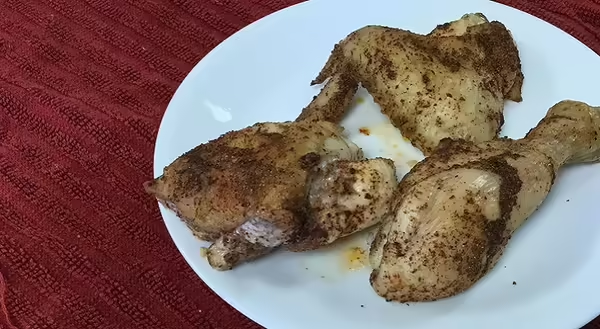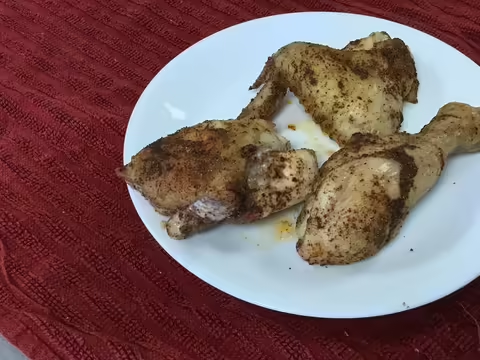
Where do you often see paprika? Sprinkled on egg salad or cottage cheese? Added to a recipe like chicken paprikash for that red color?
Paprika is made by drying and grinding varieties of mild red peppers. This powdered spice can be used to garnish foods and add color and unique flavors. A blend of different peppers creates the varieties, flavors, and heat levels of paprika you see on shelves, such as sweet paprika, Hungarian paprika, Spanish paprika, and smoked paprika.
Nutrition
Like other herbs and spices, the amount used in recipes does not often add significant amounts of nutrients, such as carbohydrates or vitamins. But the color and flavor paprika provides can enhance our recipes.
- Buy: Look for packages that are well sealed and have a "use-by" or "best-by" date as far off as possible. Also buy paprika based on your recipe. If you do not want a spicy paprika, reach for sweet paprika or one labeled just "paprika." If you want a stronger flavor, try a smoked paprika.
- Price: Price will vary by style of paprika, brand, and store. Pick one that fits your budget and your recipe.
- Store: Dried herbs and spices store best in dark, cool places, like a covered pantry. Remember to tightly seal the container to prevent air or moisture from getting inside and shortening paprika's shelf life. Like other dried herbs and spices, paprika does not usually spoil, but rather loses potency and flavor over time. Smelling to see if the strong aroma is still there is one way to test potency.
- Prepare: Paprika is ready to use out of the container. Simply measure and add to your recipe.
- Eat: Paprika can be used as both a source of color and flavor. Sprinkle paprika as a garnish, add to a recipe for a deep red-orange color, or add spicier varieties of paprika for heat.
Spice Rubbed Chicken (serves 8)
8 bone-in, skinless chicken legs or thighs
1 Tbsp each, ground cumin and chili powder
1 tsp each, onion powder, garlic powder, paprika, ground cloves, ground allspice, ground black pepper
1/4 tsp cayenne pepper
1. Preheat oven to 400°F.
2. Line a baking sheet with foil and a baking rack. Spread chicken pieces on rack, so no pieces are touching.
3. In a small bowl, add all spices and stir to combine. Sprinkle spice blend evenly over chicken pieces. With clean hands, rub spice blend all around chicken meat.
4. Bake for 30 minutes or until a thermometer reads 165°F.
Note: recipe contains no added salt, and thus no added sodium. Chicken often is packed in salt-water solutions to keep moisture, so the recipe is not sodium-free.
References:
- University of Florida. The Institute of Food and Agricultural Sciences (IFAS). Paprika—Capsicum annuum L. 2018.
- Food and Drug Administration and Western Institute for Food Safety & Security. Bell and Chili Peppers. 2016.
- New Mexico State University. Growing Chiles in New Mexico. 2014.
- Cooking Light. There Are 3 Different Types of Paprika — and It Matters Which You Use. 2017
- USDA. Agricultural Research Service. National Nutrient Database for Standard Reference Release 27
Healthy Eats and Repeat
How much difference is there between canned and frozen foods? How should you cook venison? When is the best time to buy avocados? Get answers to these questions as well as other tips, tutorials and recipes for common kitchen foods and items with University of Illinois Extension Nutrition & Wellness Educator Caitlin Mellendorf’s blog Healthy Eats and Repeat. Build your best life. Trust Extension to help.
Caitlin Mellendorf is an Illinois Extension Nutrition and Wellness Educator serving DeWitt, Macon and Piatt Counties in Central Illinois. She is a Registered Dietitian and her work focuses on helping community members gain the knowledge, skills and tools to live healthier, more nutritious lifestyles. This includes providing programs and answering questions about heart health, diabetes, food safety, food preservation, grocery shopping and cooking. You can reach Caitlin by email at chuth2@illinois.edu or call 217.877.6042. Check out her nutrition blog Healthy Eats and Repeats for seasonal recipes and of an exploration of common kitchen foods.
